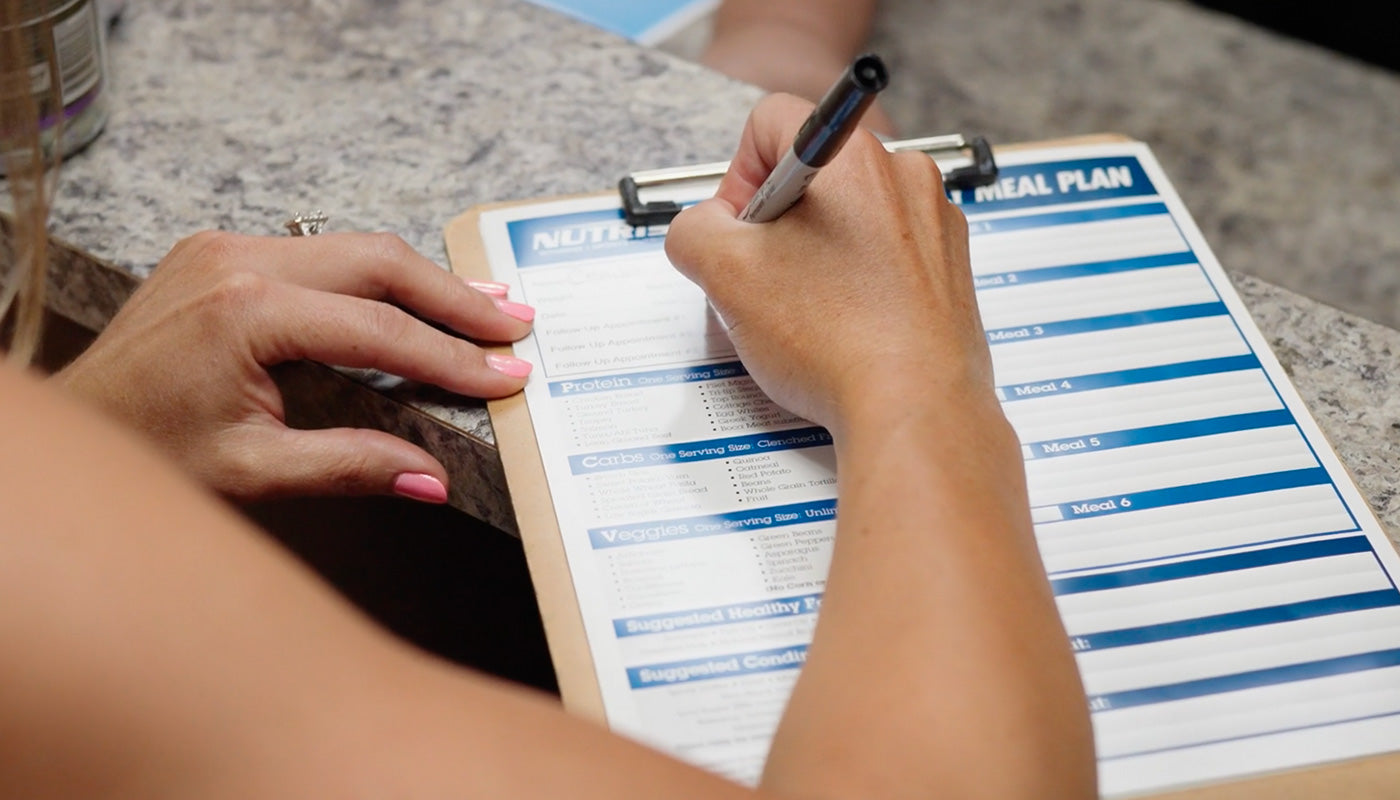We know the feeling of calves knotting up like concrete to the point you just can’t run, jump, or use your legs to power any exercise. Maybe your friends have advised you to “use a massage gun” or “drink pickle juice.” Sometimes the advice works, and sometimes it doesn’t.
Instead of the trial-and-error approach, take a moment right now to become your own detective. Learning the underlying causes of calf cramps can help you know when to apply a specific solution. In most cases, your solution needs to match your situation, and that situation changes from day to day.
Cause #1: Dehydration
The Internet has taught us that the “right amount” of water is something between 8 cups (64 ounces) and a gallon (128 ounces) a day. With such a wide range, how are you supposed to know what is right? The answer depends on age, physical size, weather, exercise, sweat rate, and nutrition. Generally, a gallon a day is necessary for males, individuals who are large in stature, warm-weather environments, exercise with high sweat rates, and those consuming a high protein diet, caffeinated beverages, or alcohol.
Hydration depends not only on the amount but also on exercise and nutrient timing. Picture this: you hit the gym first thing in the morning or after work. On your drive, you grab a protein bar and drink a couple of sips of water. Good to go ... until the calf cramps sideline your workout. You ate something healthy, so now you feel confused: what just happened?
The answer is dehydration. You didn’t have enough water pre-workout, and adding protein to an already dehydrated state compounded the calf-cramping effects. Pre-workout protein powders and bars can definitely contribute to muscle-building and weight-loss goals, but only if you have enough water to go along!
The American Council on Exercise and the National Strength and Conditioning Association provide the following water-drinking guidelines:
- 2 hours before workout: 17-20 oz of water
- 30 minutes before workout: 8 oz of water
- During the workout: 3-8 oz every 10-20 minutes
- Post-workout: 16-24 oz of water for every pound lost during the workout
If you don’t want to weigh yourself pre- and post-workout to determine how much fluid you need, try the urine test. If your urine is clear or pale yellow, your hydration status is likely appropriate. If it is yellow, you need more water. One caveat: if you consume B vitamins or multi-vitamins, your urine color will not accurately reflect your hydration status.

Cause #2: Hyper-hydration
How could we possibly have too much water? For athletes who aim for their “gallon-a-day” water goal, hyper-hydration is actually quite common. Hyper-hydration creates electrolyte imbalances. Electrolyte imbalances can also cramp calves. The calf cramps from dehydration and electrolyte imbalances feel the same, so you need to dig beyond the symptom to pick the right fix.
Hyper-hydration imbalances are common if you drink your gallon a day while also limiting the amount of sodium or potassium in your diet, or if you are a heavy sweater. The solution for lack of sodium is adding a pinch of sea salt to your meals or water jug itself. The solution for lack of potassium is eating potassium-rich foods like bananas or potatoes. The solution for heavy sweating is electrolyte-enhanced beverages or supplements. Selecting the right answer requires you to figure out your root cause.
How do you know if you are sodium deficient?
Most nutrition apps make it easy to figure out if you are sodium deficient. Assuming you’ve entered your correct gender, age, height, and weight, apps will chart out your consumption versus recommendation. You can see if you are consistently in range, high, or low. While the USDA recommends less than 2,300 mg per day for the average healthy adult, consistent remarkable deficiency is not better for fitness enthusiasts and athletes.
How do you know if you are potassium deficient?
Potassium can be a bit trickier, as many free apps don’t offer this tracking feature. You might have to spend a few days reading food labels and manually tracking your potassium consumption. The USDA recommends 3,500–4,700 mg per day for the average healthy adult.
How do you know if you need an electrolyte supplement?
If you are doing an intense workout longer than an hour, the National Strength and Conditioning Association recommends drinking 3-8 oz of an electrolyte beverage that also contains 6-8% carbohydrate every 10-20 minutes. While it is easy to assume that popular electrolyte-carb sports beverages are 6-8% carbohydrate, this is not always the case. You can calculate the percentage by dividing the grams of carbohydrate in one serving by the total serving size in milliliters. Then, multiply the result by 100.
For example, if the label says the serving size is 8 oz, and one serving contains 10 grams of carbohydrate, here is your calculation:
- Step 1: Convert ounces to milliliters. 8 ounces = 240 mL
- Step 2: Divide grams of carbohydrate the by mL serving size. 10 g carbohydrate / 240 mL = .0417
- Step 3: Multiple by 100 to transform the decimal to a percentage. 0.0417 x 100 = 4.2%
- Step 4: When supplements are outside the recommended range, they usually have too much carbohydrate. You can dilute with water into the recommended range.

Cause #3: Overuse
When key muscles like the glutes and hamstrings fatigue, the calf muscles save the day! They can keep you going in your running and jumping efforts, but like an overworked employee, eventually, they complain. They voice their complaints by cramping your calves. While a massage gun, lacrosse ball, foam rolling, or stretching may help temporarily, the problem usually returns. It may be a few hours, or a few weeks, but the calf cramps come back. The problem is that you are asking them to do too much too fast for their current capacity.
Increasing the calves’ fatigue resistance requires a few steps.
- Look at the wear pattern on the soles of your shoes. If they are quite worn down on the inner edges, you are likely over pronating. Adding basic activation exercises like glute bridges, monster walks, and toe-in eccentric calf raises off a step 2-3 days/week can help over time. Low load is the key to activation exercises. Heavy compound exercises will only shield the under-workers from actually doing the job you want to strengthen them for. You may also consider changing sneaker types to offer more arch support. If you change sneakers, gradually work into the new shoe type, starting with new shoes for only one workout per week; after a week, progress to two workouts a week, and so on.
- If you enjoy running or jumping workouts, drop the impact volume by 50%. For example, if you run 10 miles per week, cut back to 5 miles per week and select non-impact cardio options to meet your cardio duration weekly goals. Gradually increase again by 10% per week. Slow the progression down if your calf cramps return.
- Strengthen your arches. Calves love to compensate for arch weakness. One of the easiest exercises is standing on one foot while brushing your teeth. Stand on your right foot for one minute, then stand on your left for one minute. Be mindful of how you stand. Engage the “tripod” of your foot by keeping equal weight between your big toe, little toe, and heel as you actively think about lifting your arch away from the floor.
Next Steps
If calf cramps sideline your workouts, put the above tips to work to find your cause, and then employ your solution. Sometimes causes co-exist, so become a great detective. The faster you hone in on your cause, the faster you will come up with more sustainable solutions.
---------------------
About the Author: Dr. Meredith Butulis, creator of the ISSA Fitness Comeback Coach Certification (online), is a Sports Medicine Physical Therapist, NSCA Certified Strength and Conditioning Coach, ACSM Certified Exercise Physiologist, NASM Certified Personal Trainer, and Precision Nutrition Certified Nutrition Coach in practice since 2002. She consistently walks the talk as a fitness, physique, and OCR world-level competitor and lifestyle transformer since 2006, celebrating many wins along the way. Want more total fitness lifestyle inspiration and interaction? Follow Dr. Meredith on Instagram @Dr.MeredithButulis or join the free “Fitness Focus Fuel” Facebook Group.




